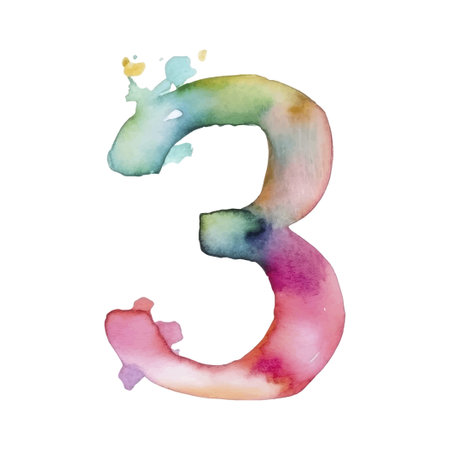Introduction to Runes and Their Place in British Heritage
Runes, with their mysterious lines and ancient resonance, are more than mere symbols etched onto stone or wood; they are profound carriers of wisdom that reach deep into the roots of British history. While often associated with Norse and Germanic traditions, runic alphabets made a notable mark on the British Isles, particularly during the early medieval period. From the windswept stones of Northumbria to the quiet corners of Kent, runes were once employed for both mundane inscriptions and sacred rituals. These markings not only served as a means of communication but also as vessels for magical intent and divinatory practice. Over centuries, runes have woven themselves into local British folklore, blending seamlessly with tales of ancient druids, wise women, and cunning folk. Their echoes can still be traced in regional customs—be it through superstitions surrounding certain letters or the way stones and trees are revered in rural communities. Understanding this unique heritage is essential for anyone wishing to develop a personal rune reading style that honours both the broader Northern tradition and the distinct spirit of the British landscape.
2. Understanding Regional Variations within the UK
The United Kingdom is a tapestry of rich and diverse cultures, each region offering its own distinctive myths, legends, and customs that can deeply influence your personal rune reading style. England, Scotland, Wales, and Northern Ireland are not merely administrative divisions; they each possess centuries-old traditions and symbolic interpretations that can add profound layers of meaning to any rune reading practice. When you embark on developing a style rooted in British local customs, it is vital to understand these regional variations, as they can inform the way you interpret symbols, choose runes for specific questions, or even conduct a reading session. For example, the mystical landscapes of Scotland inspire tales of fae folk and ancient stones, while Welsh mythology brims with Arthurian legend and poetic symbolism. English folklore often incorporates themes of woodland spirits and legendary kings, whereas Northern Ireland’s stories are steeped in Celtic myth and heroism. Each area brings unique nuances to the understanding of runes, shaping the energies you may wish to channel during readings. To illustrate these differences more clearly, consider the following table:
| Region | Mythological Influences | Traditional Symbols | Unique Customs |
|---|---|---|---|
| England | Arthurian legend, Green Man | Oak leaf, White horse | Morris dancing, Maypole festivals |
| Scotland | Pictish stones, Selkies | Thistle, Standing stones | Beltane fire festivals, Second sight traditions |
| Wales | Mabinogion tales, Druids | Red dragon, Leek | Eisteddfod poetry gatherings, Calan Mai celebrations |
| Northern Ireland | Celtic heroes (Cúchulainn), Giant’s Causeway legends | Shamrock, Harp | Lughnasadh fairs, Storytelling circles |
By thoughtfully weaving these regional elements into your rune readings—whether by referencing local deities or drawing upon traditional festivals—you honour both the ancient wisdom of runes and the living spirit of place. This mindful integration not only enriches your practice but also creates a more resonant and personally meaningful experience for those seeking guidance from the runes.

3. Incorporating Local British Customs into Rune Practice
One of the most rewarding aspects of developing your own rune reading style is weaving in the rich tapestry of local British customs, transforming each session into a celebration of regional heritage. To begin, consider aligning your rune readings with traditional British festivities such as Beltane, Samhain, or even more modern events like Bonfire Night. During these periods, you may choose specific runes whose energies resonate with the spirit of the occasion—for example, drawing Fehu for prosperity during harvest festivals or Algiz for protection around Halloween.
Blending Seasonal Events and Nature’s Cycles
Britain’s changing seasons have long been a source of inspiration and folklore. Use this to your advantage by tailoring your rune practice to reflect the rhythms of nature. In spring, focus on runes associated with renewal and growth, such as Berkana, while autumn might see a shift towards Jera for cycles and completion. Holding readings outdoors during significant seasonal transitions—perhaps beneath an ancient oak or beside a babbling brook—can deepen your connection to both the land and your clients.
Integrating Folk Wisdom and Regional Lore
British folk wisdom offers a treasure trove of insights that can be harmoniously blended with rune interpretation. Consider referencing local proverbs or stories during readings; for instance, invoking the saying “as sure as eggs is eggs” when drawing runes related to certainty or stability. You might also draw upon the legends of regional spirits—the Cornish piskeys or Yorkshire boggarts—to add layers of meaning and relevance. This approach not only enriches your sessions but also fosters a sense of shared cultural identity.
Personalising Rituals for Greater Resonance
To make your rune practice truly your own, incorporate rituals unique to your locality. Perhaps you cleanse your runes using water from a nearby sacred spring or begin each session with a short blessing in dialect. These small but meaningful gestures ground your readings in the lived experience of your region, making each encounter deeply resonant for both you and those you guide. By honouring local traditions alongside the ancient wisdom of the runes, you create a practice that feels both timeless and distinctly British.
4. Language and Symbolism: Using British English in Rune Interpretations
Incorporating the nuances of British English into your rune reading style is an essential step towards creating a truly localised and authentic practice. The richness of the language, with its many regional dialects and colloquial expressions, provides a meaningful tapestry for interpreting rune symbols in ways that resonate deeply with British clients or those interested in UK culture. By consciously adapting your explanations to reflect familiar phrases, idioms, and cultural references, you build greater rapport and convey the runes’ messages with clarity and relevance.
Why Language Matters in Rune Readings
Language shapes our perception of symbolism and meaning. Using British English, rather than more generic or American terms, allows your rune readings to feel rooted in place—echoing the landscapes, legends, and daily life of Britain. For example, referencing “the rolling hills” or “weathering the storm” aligns more closely with British experiences than using unfamiliar metaphors.
Adapting Terms: Examples and Guidance
Below is a comparison table showcasing how you might adapt standard rune interpretations by weaving in British English terms and common colloquialisms:
| Rune | Standard Interpretation | British English Adaptation |
|---|---|---|
| Fehu | Wealth, prosperity, abundance | “Bringing home the bacon,” “having a tidy sum,” “living comfortably” |
| Ehwaz | Movement, progress, travel | “Getting on like a house on fire,” “moving up in the world,” “off on a jaunt” |
| Berkana | Growth, new beginnings | “Turning over a new leaf,” “blossoming forth,” “starting afresh” |
| Thurisaz | Conflict, defence, challenge | “Up against it,” “in a bit of a pickle,” “battening down the hatches” |
| Sowilo | Success, guidance, victory | “Full steam ahead,” “on the right track,” “coming up trumps” |
Cultural Authenticity Through Storytelling and Metaphor
The use of storytelling—another hallmark of traditional British communication—can further deepen your rune interpretations. When explaining rune meanings, consider drawing upon well-known British tales or historical events to illustrate concepts. For instance, linking perseverance to the legend of King Arthur or referencing local weather patterns when discussing change can make your readings both memorable and relevant.
Tips for Deepening Cultural Connection in Readings:
- Listen for regional preferences: Adjust your vocabulary to match your client’s background—be it Scottish, Welsh, Northern English, or London-centric.
- Embrace understated humour: A touch of dry wit or gentle irony can make challenging messages more palatable.
- Acknowledge shared experiences: Referencing national events (like bank holidays or seasonal traditions) helps ground mystical insights in everyday reality.
- Use analogies from daily life: Whether referencing tea time as a moment for reflection or likening obstacles to navigating London traffic, relatable imagery makes rune wisdom accessible.
This mindful approach to language not only enriches your personal practice but also ensures that each reading honours the living culture of Britain—a true marriage of ancient wisdom and contemporary connection.
5. Building a Personal Connection with the Land
As you continue to develop your own rune reading style, fostering a personal bond with the British landscape can deepen your practice and enrich the meanings you draw from each rune. The land itself is steeped in centuries of myth, legend, and spiritual significance, making it an invaluable source of inspiration for anyone seeking to incorporate local customs into their readings.
Grounding Through Historic Sites
Visiting ancient stone circles, standing stones, or historic sites such as Avebury, Stonehenge, or Glastonbury Tor allows you to connect with the energies and stories that have shaped the land for generations. Spend time in quiet contemplation at these places; bring your runes and allow yourself to absorb the atmosphere. You may wish to perform simple grounding rituals—such as sitting quietly on the earth or touching the stones—to help attune your senses and intuition to local energies.
Nature Walks and Local Inspiration
Regular walks through woodlands, along riversides, or across moorlands can also ground your rune practice. As you walk, take note of seasonal changes—the blooming of bluebells in spring, the golden hues of autumn bracken, or the haunting mists over a winter field. These observations can become metaphors within your readings, helping you interpret runes in ways that are personally meaningful and reflective of your surroundings.
Gathering Natural Materials
Consider collecting natural objects like pebbles from a stream, acorns from an ancient oak, or heather from the moors. Use these as part of your rune casting rituals or as talismans upon your altar. Such items carry with them the spirit of place and can serve as powerful reminders of your connection to the land.
Drawing Wisdom from Local Legends
Finally, immerse yourself in local folklore—tales of fae folk in Cornwall, selkies along Scottish shores, or wise women in Yorkshire dales. Let these stories inform your interpretations and inspire you to see each rune not only through traditional meanings but also through the lens of British cultural heritage. In this way, your readings become uniquely rooted in both ancient wisdom and present-day experience.
6. Sharing and Evolving Your Practice in a British Context
Once you have begun to shape your own rune reading style, thoughtfully entwined with the customs of Britain, it is both enriching and rewarding to share your journey with others. The British Isles are home to a vibrant tapestry of traditions, and engaging with local groups—be it in person at community centres or through online communities—can greatly deepen your practice. By joining gatherings of like-minded individuals, whether through established pagan societies, folklore circles, or rune study groups, you can exchange insights on how British landscapes, legends, and seasonal festivals influence interpretation and ritual. These connections foster a spirit of mutual learning that resonates with the traditional British value of communal wisdom.
Online platforms, from dedicated forums to social media groups focusing on runic divination within a British context, offer accessible spaces to discuss your experiences. Share stories about incorporating elements such as local plants, historic sites, or even regional dialects into your readings. Encourage dialogue by asking questions or offering advice born from your personal journey—this not only strengthens your understanding but also helps others who seek to honour their heritage within their divinatory work.
Remember that the process of integrating British customs is ever-evolving. As you participate in discussions or collaborative readings, remain open to new perspectives—perhaps you will discover a Cornish tradition that enhances your spread or a Scottish myth that brings clarity to a challenging rune. In this way, each interaction becomes an opportunity for growth, ensuring your practice remains rooted yet responsive to the living culture around you.
By actively contributing to the wider community—sharing what you have learned and embracing the wisdom of others—you not only honour the ancient spirit of rune reading but also help ensure its ongoing relevance within modern British life. This approach embodies the enduring value placed upon shared knowledge and collective advancement found throughout Britain’s spiritual history.


